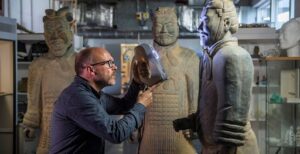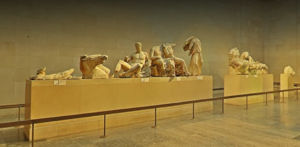The use of 3D printing in archaeology and cultural heritage preservation has revolutionized the way we approach the study and conservation of historical artifacts and sites. 3D printing technology allows for the creation of detailed and accurate replicas of artifacts and structures, making it easier to study and preserve them. In this article, we will explore the use of 3D printing in archaeology and cultural heritage preservation, including its advantages, challenges, and future trends.
Advantages of 3D Printing in Archaeology and Cultural Heritage Preservation
Preservation of Fragile or Rare Artifacts
One of the key advantages of 3D printing in archaeology and cultural heritage preservation is its ability to create replicas of fragile or rare artifacts. Fragile or rare artifacts may be too delicate to handle or display, or may be located in inaccessible areas. 3D printing allows for the creation of accurate replicas that can be handled, displayed, and studied without risking damage to the original artifact.

Study and Analysis of Artifacts
3D printing also allows for the study and analysis of artifacts in a way that was not previously possible. Replicas can be created with greater detail and accuracy than traditional mould-making methods, allowing for closer examination and analysis of the artifact. This can lead to new insights and discoveries about the artifact and the culture that produced it.
Education and Outreach
3D printing can also be used for educational and outreach purposes. Replicas can be created for use in museums, exhibits, and classrooms, allowing for a more interactive and engaging learning experience. This can help to increase public interest and awareness in archaeology and cultural heritage preservation.
Reconstruction of Structures and Sites
3D printing can also be used to create accurate replicas of structures and sites. This can be particularly useful in cases where the original structure or site is damaged or destroyed. Replicas can be used to help in the reconstruction of the structure or site, or to create virtual reconstructions for use in research and education.
Challenges and Considerations
While 3D printing offers many advantages in archaeology and cultural heritage preservation, there are also challenges and considerations to keep in mind. Here are some of the key challenges:
Cost
The cost of 3D printing technology can be high, particularly for larger-scale projects. This can make it difficult for smaller organizations and institutions to adopt 3D printing as a key technology in their conservation and research efforts.
Intellectual Property and Cultural Sensitivity
There may be concerns around intellectual property and cultural sensitivity when creating replicas of artifacts and structures. In some cases, creating replicas may not be appropriate due to concerns around cultural ownership and sensitivity.
Quality Control
Ensuring consistent quality in 3D printed replicas can be challenging, particularly for larger-scale projects. The quality of the final replica may be affected by factors such as printer calibration, material quality, and design errors. This can make it difficult to ensure consistent quality across different projects and replicas.
Ethics and Authenticity
There may be concerns around the ethics and authenticity of creating replicas of artifacts and structures. Some argue that creating replicas can devalue the original artifact or structure, or that it can be misleading to the public. As such, it is important to carefully consider the ethics and authenticity of creating replicas in each individual case.
Future Trends in 3D Printing and Cultural Heritage Preservation
As 3D printing and cultural heritage preservation continue to evolve, there are several future trends that are emerging in the industry. Here are some of the key trends:

Integration with Virtual Reality
The integration of 3D printing with virtual reality is an emerging trend in cultural heritage preservation. By creating accurate replicas of artifacts and structures, and combining them with virtual reality technology, researchers and educators can create immersive and interactive experiences for the public.
Use of Drones and Scanners
The use of drones and scanners is also an emerging trend in cultural heritage preservation. By using drones and scanners, researchers can create accurate 3D models of structures and sites, which can then be used to create replicas using 3D printing technology.
Use of Sustainable Materials
The use of sustainable materials in 3D printing is an emerging trend in cultural heritage preservation. With organizations becoming more environmentally conscious, there is growing interest in using sustainable materials in the creation of replicas and other 3D printed materials.
Examples of 3D Printing in Archaeology and Cultural Heritage Preservation
The British Museum
The British Museum has used 3D printing technology to create replicas of artifacts, including the Rosetta Stone and the Assyrian Lion Hunt Reliefs. These replicas are used for educational and outreach purposes, allowing visitors to interact with the artifacts in a more hands-on way.

The National Museum of Natural History
The National Museum of Natural History has used 3D printing technology to create replicas of fossils, including a replica of a tyrannosaur skull. These replicas are used for study and research purposes, allowing researchers to examine the fossils in greater detail.
The Vatican
The Vatican has used 3D printing technology to create replicas of historical sculptures and artifacts, including the famous Laocoön and His Sons sculpture. These replicas are used for educational and outreach purposes, allowing visitors to learn about and interact with the Vatican’s collection of historical artifacts.
The Palace Museum in Beijing
The Palace Museum in Beijing has used 3D printing technology to create replicas of historical buildings and structures, including the Qianlong Garden. These replicas are used for research and conservation purposes, allowing researchers and conservationists to study and analyze the structures in greater detail.
Conclusion
The use of 3D printing in archaeology and cultural heritage preservation has transformed the way we approach the study and conservation of historical artifacts and sites. With its ability to create accurate replicas of fragile or rare artifacts, facilitate study and analysis, and enhance education and outreach, 3D printing offers many advantages in the field of cultural heritage preservation. While there are challenges and considerations to keep in mind, careful planning and consideration can help to ensure that 3D printing is used in an ethical and responsible manner. As technology continues to evolve, we can expect to see even more innovation and growth in the use of 3D printing in archaeology and cultural heritage preservation.






